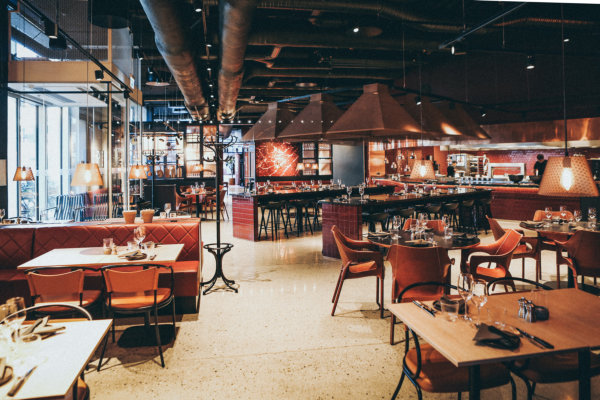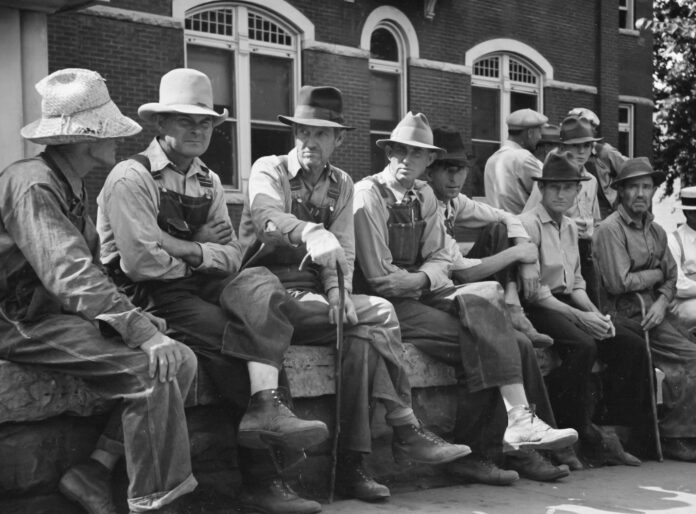What we are seeing around the country and much of the world is a forced, self-imposed partial economic shutdown. Entire segments of our economy have been shut down: Travel, hospitality, entertainment, sports, significant segments of retail, and good-sized chunks of manufacturing.
The danger of this economic shutdown is that like any complex mechanism with multiple interrelated parts, restarting the economy it is much harder than shutting it down.
I am not an economist by training, but I am a businessman, and I have owned a small business or two. I’ve also worked in large multinational corporations where I sat across the desk from the CFO as we negotiated a 30 percent cut to my department’s budget due to a recession and slowing sales. I’ve sat at the table with the management team and debated who to lay off. I have seen what happens when you lose a few million jobs, and I can extrapolate what happens when you lose more than 10 or 20 million.
So for all you who have an uncomfortable feeling in their gut about these shutdowns, but aren’t quite sure why, you are correct. Jobs matter. They matter to the individuals, their families and every company who counts that person as a customer. When millions of jobs go away, it impacts millions more, and the death spiral continues until it falls to a sustainable level. Then, slowly, it can start to climb back up the steep curve.
COVID-19 is Different from 9/11
After 9/11, business paused for a few days and the world held its breath. Airlines were grounded. There was a banking holiday, and stock markets were closed. But we got back to work in just a few days. As far as most workers were concerned, the brief absence wasn’t much different than a long weekend.
This time, we’ll be lucky to get back to work in a few months.
Immediately after 9/11 was the anthrax scare, and that changed how we did business, and particularly how businesses handled the mail, but it didn’t shut things down.
The danger of the coronavirus shutdown is that we might not be able to get things restarted as quickly or as smoothly due to the extent that every business relies on many other businesses. Equally important will be the impact on unemployment and paper losses in the stock market on the consumer’s psyche.
Restaurants Are Going to be in Trouble
Let’s look at a fictitious restaurant, JoAnne’s. While this restaurant is not real, the numbers are sound, as is the process. In other words, this story is based in reality, even if it is a streamlined version told with some poetic license.
Founded by JoAnne and her husband three years before, the restaurant is in a shopping center and has built a good reputation. JoAnne handles the front of house while Louis is the chef and manages the back of house.
Before the outbreak, JoAnne’s served an average of 180 people a night, across all seatings, including the bar. On a busy weekend, that could be 260 customers, but on a slow Monday, it might only be 100. They also averaged two large private parties a week and two catering jobs. The restaurant was bringing in more than $60,000 in revenue per week and averaging a 4.5 percent net profit, although both these figures varied slightly based on holidays and cyclical volume.
After the governor lifts the shutdown and social restriction rules, they are excited to be back in business. They are able to re-hire 90 percent of their staff, but after a good opening night, traffic falls off and sinks more and more until it soon levels off at about 50 percent of what is was before the shutdown.
In addition, many of their potential customers have lost at least one of the jobs in their household and can no longer afford to spend $100 on a nice dinner. They’ve got to pay their past due rent or mortgage and reduce the amount they owe on their credit cards before they can even think about going out to dinner.
Why? Because many of their customers are a little gun shy. (A recent Gallup survey showed that 70 percent of people would not immediately return to normal behavior after the government lifts restrictions.) They are not yet ready to risk illness by eating out.

Photo by Nick Karvounis.
If half JoAnne’s customer base stays home because they are scared or cannot afford to eat out, then the restaurant will serve an average of only 90 people per day, and their income will drop to $30,000 per week. That’s not enough for JoAnne’s to remain in business. Why? Because of their fixed costs. Costs for things like their lease or rent, insurance, utilities and fees from her online reservation company, the people who manage her social marketing, and other services don’t drop when the customer volume does. While JoAnne and Louis had no problem paying their bills before, they cannot afford to do so with only half the income.
Let’s look a deeper dive into the numbers: The largest expense JoAnne’s had is the cost of food and the cost of labor. These combine to account for 65 percent of their weekly sales ($42,000). That means their fixed costs are 30 percent ($19,500), leaving 5 percent as their net profit.
JoAnne and Louis have been running the business long enough that they adjust staffing and the amount of food and alcohol ordered to accommodate the slower traffic, but they can’t do anything about the lease payment and their other fixed costs. They cancel some services and go back to taking reservations on the phone, but they have contracts with some suppliers and can’t stop paying workers comp and the landlord. Even though they have fewer employees, they still have to pay the payroll processor and accountant.
With their weekly income is cut in half to $30,000, the fixed costs still take up $19,500 which is now a huge percentage of their revenue. While they used to leave about $37,000 for food and labor every week, their variable costs, now there is only $11,500. There is no way they can drop the quality of food or cut their staff 70 percent below what it was. In fact, to serve 50 percent fewer customers requires at least 60 percent of their prior staffing level. They do some email blasts with coupons and social media promotions, but neither of them drive sales like they used to. They talk to a few other restaurateurs and learn that they are not alone. Business is down for everyone except some of the fast food places with value menus. It seems like couples no longer can afford to spend $100 plus tip for dinner.
At the end of the month the business has only $45,000 to pay $120,000 in variable costs, a deficit of $75,000. Desperate to hang on to the business they have poured their lives into, the owners decide not to take a salary and they carefully pick the vendors they can stop paying. For example, they won’t buy any more wine because they have more than $12,000 worth in stock. This should sell for $35,000 or more, assuming people will buy it. (Some of those bottles have been on the shelf months, so they decide to discount them.)
After being open for 60 days, things haven’t improved much. People are not having private parties and the catering business is down, probably because many workers are still working at home and companies are still leery about hosting large group meetings. They’ve rebooked some rehearsal dinners for weddings that were canceled, but those are months away. Meanwhile, the suppliers they haven’t paid are threatening to cut them off. They decide to put some expenses on their corporate purchasing card, which has a $50,000 limit. It buys them some time, but neither of them know how they will pay that off when the bill comes due.
The Bill Comes Due
After 90 days, they are faced with the choice of paying the employee tax withholdings or the bill from their largest food supplier, but they can’t afford to do both. Their accountant tells them to pay the taxes, because the IRS will come after them personally if the taxes aren’t paid. They ask the accountant what they can do given the situation. They are hoping for an idea they haven’t considered, but all he can do it give them the name of an attorney who handles bankruptcy claims.
The attorney is busy, but the assistant schedules a phone consultation for three days later. The attorney doesn’t care that this is their life’s work. She’s seen it all before and never more than in the months following COVID-19. She discusses the options and since neither of them can see a way through to re-organize and pay their bills over time, they opt for a chapter 7 liquidation. The attorney emails them a lengthy form to fill out and tells them that they have to pay her up front, before she will file for bankruptcy. JoAnne studies the form and realizes they’ll have to get the accountant involved, and he’ll want to be paid up front, too.
By Friday, three of their suppliers have cut them off and the bank called about the past due purchasing card bill. There are shortages in the kitchen and they server more pasta and chicken on that night’s menu than usual. After the last customer is hurried out, they tell their employees that they are shutting down and declaring bankruptcy. Some of them are shocked, but a few saw the writing on the wall when deliveries stopped. The company has enough money in their account for payroll, but not enough to pay any severance. JoAnne tearfully apologizes and assures the employee that they will be eligible for unemployment. They give employees a bottle of the wine no one wanted to buy and some food as they head out. Then the couple takes their favorite pieces of art off the wall and a few bottles of wine for themselves. Louis takes his knives and personal chef’s gear.
JoAnne returns the next day to record a message on the phones and put up a closed sign. She emails her suppliers, empties her desk, grabs a few mementos with their logo, and sheds some more tears. Damn those Chinese and their virus, she thinks as she locks the door a final time.
Their attorney files bankruptcy on Tuesday. When you count the value of the lease, they owed creditors close to $500,000 and had under $100,000 in assets. They had spent close to $200,000 building out the space and equipping the kitchen, but they can’t recoup those costs. They would be shocked at how little their expensive equipment sold for when the bankruptcy trustee auctioned it off. But there were so many restaurants declaring bankruptcy that the market for used kitchen gear was flooded.
A Similar Story
We’re going to see a similar story across the country and across multiple states. Some restaurants at the bottom and the top of the scale will survive, but many in the middle will fail simply because their margins are too low to sustain the company as sales drop.
Many other small retailers will face the same situation, especially if they sell discretionary items like jewelry, electronics, or higher end apparel. (Let’s face it, most of us don’t need new clothes, we just want them.) Kitchen and bath remodelers, painters, carpenters, window installers, and others who serve the remodeling industry will suffer as remodeling projects are put on hold.
Some stores, like consignment shops, dollar stores, sewing stores and others that serve the do-it-yourself market, will thrive, but far more will struggle
Then there are the retailers that sell high ticket items like new cars, furniture, and appliances. As we see in every recession, these durable goods are among the last segments to recover. People who are worried about money will repair their old car or buy a used one rather than spend on a new car, even if interest rates are low. Retailers of consumables will also see a downturn, but it won’t be as pronounced. Customers under financial pressure will splurge less, buy cheaper items, and in smaller quantities. They will stretch supplies, substitute what they have for what they want, and spend less.
Travel and leisure will also be slow to recover, and the cruise industry may never be the same. Business travel will be down because it will take some time to restart industry and many people will have gotten used to working remotely. Why fly to Los Angeles when everyone is used to online meetings? Conferences and trade show attendance will be down, in part because they are a huge expense that is easily trimmed from marketing budgets, but also because of the lingering fear of cramming your entire sales team into an airplane or hotel ballroom where they could all get sick thanks to one undiagnosed asymptomatic carrier.
The home building sector will be down because of lost income and the drop in net worth due to the stock market crash. It will be tougher to sell existing homes for the same reason, but also because people will have just weathered months of unemployment – and you need good credit and a solid income to buy a house. That means builders, their subcontractors and craftsmen, realtors and mortgage brokers whose jobs will not come back when we finally banish the coronavirus.
Once Bitten, Twice Shy
Donald Trump can hold rallies, the fed can pump money into the economy, Congress can send out checks and lower taxes, but none of this will get people to spend money at the pace they did last year because of the lingering climate of fear, uncertainty and doubt. It’s going to take a while to clear that from people’s minds and even longer to get back to what might be called “rational exuberance.”
Read the first part of this series, We’re Three Years from Normal
Opening photos is Loafers’ wall, by courthouse, Batesville, Arkansas. Taken by Carl Mydans, it is part of the Library of Congress collection.







